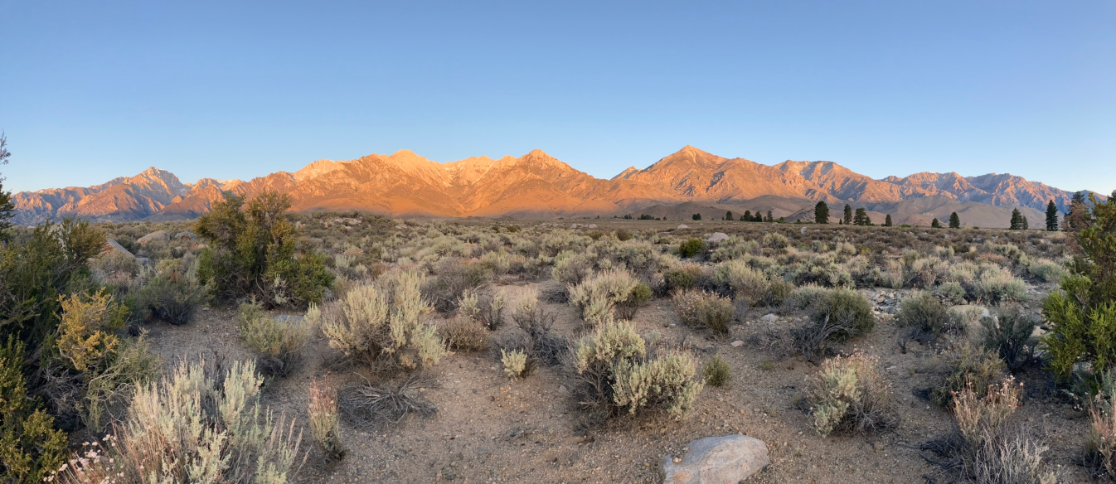Nevada Bird Count 2015, the Wrap-Up, Part 1
/Last month, the crew finished their final day, turned in their equipment, and headed off for new adventures. A fantastic group of hard-working bird-crazy folks – thanks guys! The season went well, with bird surveys scattered across the southern and western portions of the state, primarily Warm Springs Natural Area, Las Vegas Wash, Ash Meadows Natural Wildlife Refuge, the Pine Nut Range, Anaho Island, Walker River, and Truckee River – with a few forays into the Stillwater Range and the Winnemucca and Vya areas, as well. Most of our transects were old friends, but we added several new ones on Walker Basin Conservancy’s Pitchfork and Rafter7 ranches and at Ash Meadows NWR, along with the transects in the Stillwaters and near Winnemucca and Vya.
Some of the crew sent me some of the highlights of their season, which I’ll share over the next week or so. While it's a tough call, my highlight was probably at the beginning of the season, continuing the surveys at Warm Springs Natural Area, following the breeding territories there, and documenting the progression of changes within the vegetation and bird communities there post-fire. I continue to boggle at how rapidly vegetation grows within riparian areas in the Mojave Desert! For the first time, I was able to witness a Vermilion Flycatcher male engaged in a nest-site display, where he wedged himself into the fork of a branch, and fluttered, until his mate flew over to join him. He displayed in the exact location that he had nested last year - though this time around, the pair chose to build the nest elsewhere.
It was also extremely interesting to compare the vegetation/bird phenology this year with past years – presumably because of our warm and dry winter and spring, many species appeared to be about 2 weeks ahead of my perception of “their regular schedule.” I’m looking forward to diving into more of our data to determine whether that perception holds up!
But on to our crew! Kaitlin joined the NBC for the latter part of our season, after finishing up work on our Lower Colorado River project. She shared:
Most everyone who regularly spends the evening outdoors in the west could recognize the sweet springtime song of the Common Poorwill announcing the arrival of night. Common though they may be, a sighting of these mysterious night ghosts is rare, exciting, and generally relegated to late night drives on lonely gravel roads, catching the pumpkin reflection of headlights in their eyes before a flash of whirring wings disappears out of the beam. Photographs and illustrations seem to always depict them in the same pose - crouched on the ground, staring with eyes so big and vacant it's as if they see more from the spirit world than our own. Description of behavior in field guides suggests little: "Active at night, fly-catches from the ground". Based on these limited sources, poorwills existed in my mind's eye as intricately painted, stoic semi-statues possessing huge mouths that might be used to lazily vacuum insects from the air like a whale shark filters plankton from warm seas. My first intimate encounter with a poorwill, which occurred as a field technician for GBBO's Nevada Bird Count project, blew that vision away like air rushing from a popped balloon.
While enjoying a camp-side nightcap as the sun seeped out of sagebrush slopes and slipped from branches of a small aspen stand, my partner and I suddenly became aware of a presence in a small footpath straddling these two habitats. There, hunched in perfect dusky camo, was a Common Poorwill. But he was not poised, waiting patiently for his breakfast. He was startlingly animated, eyes shining bright with vitality, head darting up, down, back and forth with frenetic attention on prey completely invisible to us, scurrying a few inches to the left, hopping a few inches to the right. Then he leaped into the air faster than I could follow with my binoculars, or even my eyes in the diminishing light, presumably snapping his enormous mouth over his quarry then returning to earth - all before I could blink. The second I could regain focus on him, he sallied up again, and again, and again, each time practically disappearing into another dimension before materializing again at his perch. Even more amazingly, this rapid action sequence was conducted in utter silence. Poorwill wing beats, like owls, don't seem to ruffle a single atom of the air - in stark contrast to the whistling skip of uplifting doves or the lisping trill of round little sparrow wings. Which means, any time you're hanging outside after dusk, enjoying an evening brew on the porch or waiting for the stars to blink into view, there could be a poorwill excitedly gulping down armies of your insect enemies mere meters away without even rippling the fringes of your awareness! Unless, of course, he opens his gaping mouth to sing out his name, softly and sweetly, behind the black curtain of night.
That’s it for this installment! Happy birding,
Jen



